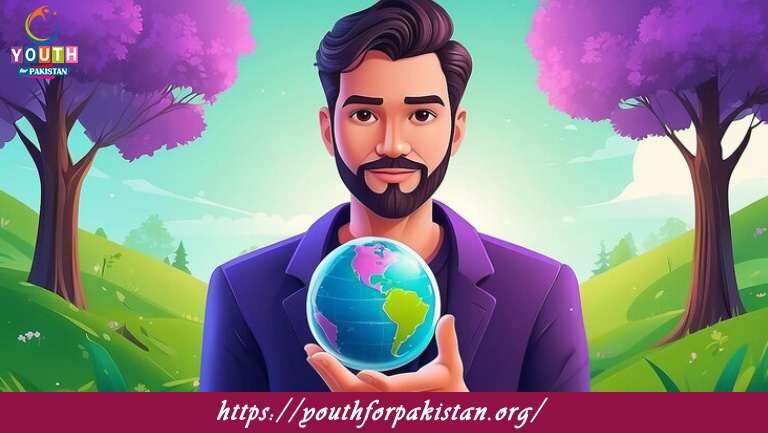10th Class Biology Chapter 16 MCQs with Answers

Explore human interaction with the environment through these MCQs. Learn about ecosystems, pollution, and conservation strategies. Trending keywords like “environmental biology MCQs” and “man-environment interaction quiz questions” make this resource a must-have for students.
Which of the following is an example of a biotic component of the environment?
a) Air
b) Water
c) Sunlight
d) Plants
The term “biomagnification” refers to:
a) The increase in the number of species in an ecosystem
b) The increase in the size of individual organisms over time
c) The increase in the concentration of toxic substances in the food chain
d) The increase in the availability of resources in an ecosystem
Which of the following is a renewable natural resource?
a) Fossil fuels
b) Minerals
c) Freshwater
d) Natural gas
The process of converting waste materials into reusable materials is called:
a) Recycling
b) Composting
c) Incineration
d) Landfilling
Which of the following is a non-renewable natural resource?
a) Wind energy
b) Solar energy
c) Natural gas
d) Biomass
The ozone layer is important because it:
a) Absorbs carbon dioxide from the atmosphere
b) Protects the Earth from harmful ultraviolet (UV) radiation
c) Helps in the process of photosynthesis
d) Regulates the Earth’s temperature
Which of the following is a greenhouse gas?
a) Oxygen
b) Nitrogen
c) Carbon dioxide
d) Helium
The process of planting trees to increase forest coverage is known as:
a) Afforestation
b) Deforestation
c) Reforestation
d) Affirmation
Which of the following is an example of a natural ecosystem?
a) A farm with cultivated crops
b) A city park with landscaped gardens
c) A forest with diverse plant and animal species
d) A residential area with houses and roads
The process of breaking down complex substances into simpler ones by microorganisms is called:
a) Fermentation
b) Photosynthesis
c) Decomposition
d) Respiration
Which of the following is a major cause of deforestation?
a) Planting trees for conservation
b) Clearing land for agriculture and settlements
c) Promoting sustainable forest management
d) Establishing national parks and wildlife reserves
The depletion of the ozone layer is primarily caused by:
a) Carbon dioxide emissions
b) Methane emissions
c) Chlorofluorocarbons (CFCs)
d) Nitrous oxide emissions
Which of the following is a renewable source of energy?
a) Coal
b) Natural gas
c) Solar energy
d) Petroleum
The process by which water vapor is released from the surface of plants into the atmosphere is called:
a) Transpiration
b) Precipitation
c) Condensation
d) Evaporation
The process of removing salt and other impurities from seawater to make it suitable for drinking and irrigation is called:
a) Desalination
b) Filtration
c) Distillation
d) Precipitation
Which of the following is an example of a natural disaster?
a) Forest fire caused by human activities
b) Earthquake triggered by underground tectonic movements
c) Flooding due to heavy rainfall
d) Industrial accident leading to chemical spillage
The process of converting organic waste materials into nutrient-rich compost is called:
a) Recycling
b) Incineration
c) Composting
d) Landfilling
Which of the following is a biodegradable waste?
a) Plastic bottles
b) Glass jars
c) Paper bags
d) Aluminum cans
The accumulation of toxic substances in the tissues of organisms as they move up the food chain is called:
a) Biomagnification
b) Biodegradation
c) Bioaccumulation
d) Biodiversity
Which of the following is a consequence of environmental pollution?
a) Increased biodiversity
b) Improved air quality
c) Climate change
d) Enhanced ecosystem stability
The process of converting solid waste into ash by burning it at high temperatures is called:
a) Recycling
b) Incineration
c) Composting
d) Landfilling
Which of the following is an example of a sustainable practice to protect the environment?
a) Overfishing in the ocean to meet high demand
b) Using plastic bags for shopping
c) Promoting afforestation to increase forest cover
d) Discharging untreated industrial waste into water bodies
The increase in the concentration of greenhouse gases in the atmosphere is contributing to:
a) Global cooling
b) Depletion of the ozone layer
c) Acid rain formation
d) Global warming
Which of the following is a way to conserve water resources?
a) Using sprinklers for irrigation
b) Letting taps run continuously
c) Fixing leaking pipes and faucets
d) Washing cars daily with high-pressure hoses
The burning of fossil fuels releases into the atmosphere, contributing to air pollution and climate change.
a) Oxygen
b) Nitrogen
c) Carbon dioxide
d) Water vapor
Which of the following is an example of a non-biodegradable waste?
a) Vegetable peels
b) Newspaper
c) Plastic bags
d) Wood
The loss of habitat due to human activities is a major cause of loss.
a) Species
b) Genetic
c) Ecosystem
d) Biodiversity
Which of the following is a consequence of deforestation?
a) Increased carbon dioxide absorption by trees
b) Reduction in soil erosion
c) Loss of biodiversity and habitat destruction
d) Promotion of ecological balance
Which of the following is an example of a natural ecosystem service?
a) Purification of air by industries
b) Filtering of water by water treatment plants
c) Pollination of crops by bees
d) Disposal of waste in landfills
The Earth’s natural satellite is known as:
a) Venus
b) Mars
c) Moon
d) Jupiter
Which of the following is a major greenhouse gas responsible for global warming?
a) Nitrogen
b) Oxygen
c) Carbon dioxide
d) Helium
The process by which water is lost from the leaves of plants in the form of water vapor is called:
a) Transpiration
b) Precipitation
c) Condensation
d) Evaporation
The ozone layer is located in which layer of the Earth’s atmosphere?
a) Troposphere
b) Stratosphere
c) Mesosphere
d) Thermosphere
Which of the following is a method to reduce air pollution?
a) Burning fossil fuels for energy
b) Using cars with low fuel efficiency
c) Planting trees to absorb carbon dioxide
d) Discharging industrial waste into water bodies
The process of converting solid waste into organic fertilizer is called:
a) Recycling
b) Composting
c) Incineration
d) Landfilling
Which of the following is a consequence of air pollution?
a) Increased biodiversity
b) Acidification of oceans
c) Reduced greenhouse effect
d) Respiratory problems in humans
Which of the following is an example of a non-renewable resource?
a) Wind energy
b) Solar energy
c) Natural gas
d) Biomass
The process of releasing excess heat by water bodies into the atmosphere is called:
a) Condensation
b) Transpiration
c) Evaporation
d) Cooling
Which of the following is a sustainable practice to protect the environment?
a) Overfishing in the ocean to meet high demand
b) Using plastic bags for shopping
c) Promoting afforestation to increase forest cover
d) Discharging untreated industrial waste into water bodies
The process of converting waste materials into reusable materials is called:
a) Recycling
b) Composting
c) Incineration
d) Landfilling
Which of the following is a natural source of water pollution?
a) Industrial discharge
b) Agricultural runoff
c) Oil spills
d) Groundwater contamination
The process of converting organic waste materials into nutrient-rich compost is called:
a) Recycling
b) Incineration
c) Composting
d) Landfilling
The process of removing salt and other impurities from seawater to make it suitable for drinking and irrigation is called:
a) Desalination
b) Filtration
c) Distillation
d) Precipitation
Which of the following is an example of a natural disaster?
a) Forest fire caused by human activities
b) Earthquake triggered by underground tectonic movements
c) Flooding due to heavy rainfall
d) Industrial accident leading to chemical spillage
The process of converting solid waste into ash by burning it at high temperatures is called:
a) Recycling
b) Incineration
c) Composting
d) Landfilling
Which of the following is an example of a sustainable practice to protect the environment?
a) Overfishing in the ocean to meet high demand
b) Using plastic bags for shopping
c) Promoting afforestation to increase forest cover
d) Discharging untreated industrial waste into water bodies
The increase in the concentration of greenhouse gases in the atmosphere is contributing to:
a) Global cooling
b) Depletion of the ozone layer
c) Acid rain formation
d) Global warming
Which of the following is a way to conserve water resources?
a) Using sprinklers for irrigation
b) Letting taps run continuously
c) Fixing leaking pipes and faucets
d) Washing cars daily with high-pressure hoses
The burning of fossil fuels releases into the atmosphere, contributing to air pollution and climate change.
a) Oxygen
b) Nitrogen
c) Carbon dioxide
d) Water vapor
Which of the following is an example of a non-biodegradable waste?
a) Vegetable peels
b) Newspaper
c) Plastic bags
d) Wood
The loss of habitat due to human activities is a major cause of loss.
a) Species
b) Genetic
c) Ecosystem
d) Biodiversity
Which of the following is a consequence of deforestation?
a) Increased carbon dioxide absorption by trees
b) Reduction in soil erosion
c) Loss of biodiversity and habitat destruction
d) Promotion of ecological balance
Which of the following is an example of a natural ecosystem service?
a) Purification of air by industries
b) Filtering of water by water treatment plants
c) Pollination of crops by bees
d) Disposal of waste in landfills
The Earth’s natural satellite is known as:
a) Venus
b) Mars
c) Moon
d) Jupiter
Which of the following is a major greenhouse gas responsible for global warming?
a) Nitrogen
b) Oxygen
c) Carbon dioxide
d) Helium
The process by which water is lost from the leaves of plants in the form of water vapor is called:
a) Transpiration
b) Precipitation
c) Condensation
d) Evaporation
The ozone layer is located in which layer of the Earth’s atmosphere?
a) Troposphere
b) Stratosphere
c) Mesosphere
d) Thermosphere
Which of the following is a method to reduce air pollution?
a) Burning fossil fuels for energy
b) Using cars with low fuel efficiency
c) Planting trees to absorb carbon dioxide
d) Discharging industrial waste into water bodies
The process of releasing excess heat by water bodies into the atmosphere is called:
a) Condensation
b) Transpiration
c) Evaporation
d) Cooling
Which of the following is a sustainable practice to protect the environment?
a) Overfishing in the ocean to meet high demand
b) Using plastic bags for shopping
c) Promoting afforestation to increase forest cover
10
d) Discharging untreated industrial waste into water bodies
If you are interested to enhance your knowledge regarding Physics, Chemistry, Biology, and Computer please click on the link of each category, you will be redirected to dedicated website for each category.





